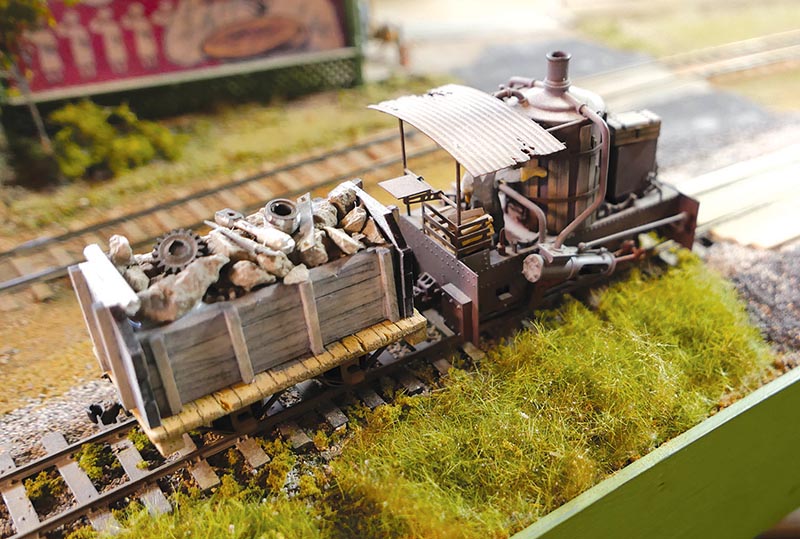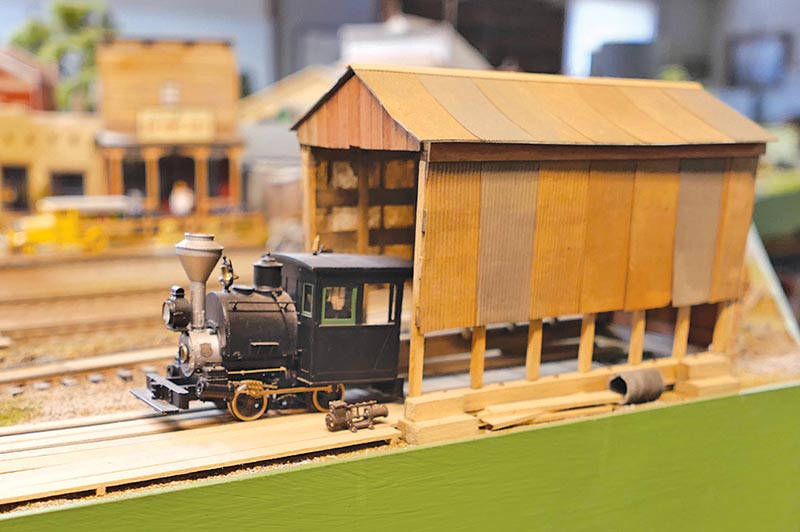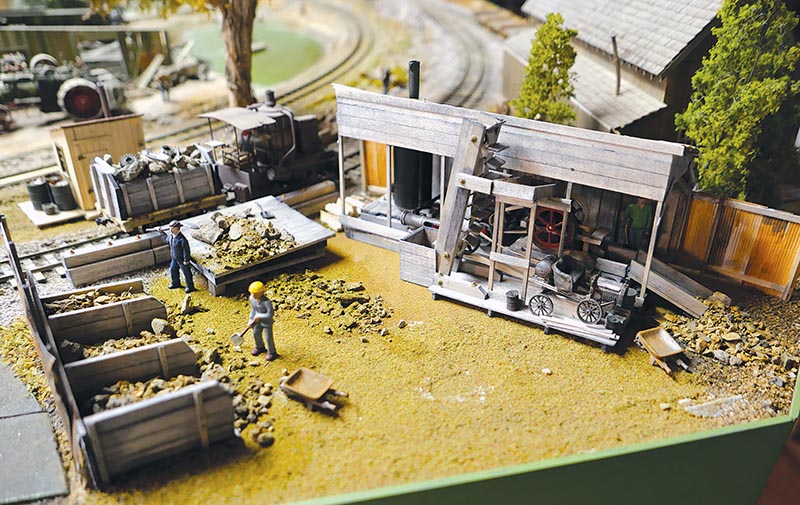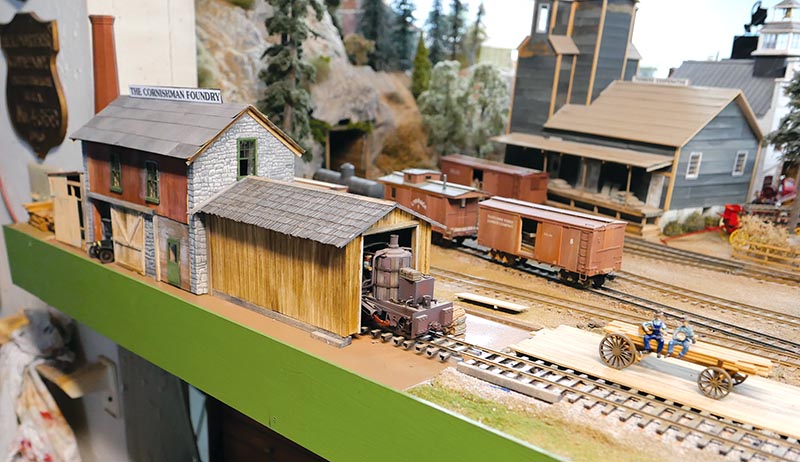 My On3 Tuolumne Forks Lumber Company layout is some 40 years old. Sure, I have made changes over the years and rebuilt things, but most of it is as it has been for a long time. I first hand-laid the track with Code 100 rail, but soon tore out much of the code 100 and re-laid it with Code 70 rail. But over the years, things have accumulated that nag at me. You know, stuff poorly done or planned, or just done to get it done. I know several modelers who do everything perfectly, I am not one of them.
My On3 Tuolumne Forks Lumber Company layout is some 40 years old. Sure, I have made changes over the years and rebuilt things, but most of it is as it has been for a long time. I first hand-laid the track with Code 100 rail, but soon tore out much of the code 100 and re-laid it with Code 70 rail. But over the years, things have accumulated that nag at me. You know, stuff poorly done or planned, or just done to get it done. I know several modelers who do everything perfectly, I am not one of them.
Here are some examples of nags. I have two road crossings that are bad and embarrassing, and I don’t have a log loading scene, even though my layout represents a logging railroad. My boat works tarpaper roofing is coming off due to age, and needs some Wild West Scale Model Builders shakes, and one side of the layout is a real mess, but I hope to run an eight- to ten-foot-long western town in the area using Bodie buildings assembled from Neil Pfafman drawings. I now have six buildings ready to go, and there is a real need for a place to park my railbus out of the way.

ABOVE: The waste train on its way to the dump. The dump car was built on an old logging truck. That’s one of those poorly done road crossings just ahead of the locomotive.
However, one great big nag was just too much to explain away to visitors and I decided to fix it. Several years ago, I laid what was left of my Code 83 On3 flextack on a branch down one side of my layout. The branch is about 20 feet long. It is isolated from my DCC layout and is a DC section so I can run several small locomotives given to me by my friend, Sam Furukawa. One of these models is a Backwoods Miniatures vertical boilered 0-4-0 that I just had to run, but was not going to tear apart to install a decoder. I love its wood lagged boiler and plumbing detail, and it is a sweet runner.
So, I laid my track, added a spur to an engine house, and forgot that the track ran to nowhere with no purpose. I eventually added a Keystone Models Danby sawmill at one end, but the trains still had nowhere to go and didn’t run very reliably. However, once I added some NO OX (see page 22, July/August 2022 GAZETTE) and the trains perked up, I decided to do something about this nag.

ABOVE: The engine house with a Porter 0-4-0T.
I had been reading a book about vertical-boilered industrial locomotives in England that were used in foundries, water works, quarries and other small industrial locations. So, I thought if I replaced the sawmill with a foundry, I could use the little vertical-boilered locomotive to haul a daily waste train out of the foundry to a dump yard where the waste would be crushed into fill or material to surface roads, giving purpose to my little branch line to nowhere.
So, out came the sawmill. I had a stone and wood building under my layout that I had assembled years ago. It has Tom Yorke all over it and must have been one of his early kits. I added a lean-to with a brick chimney and an extension to house the locomotive and dump car and called it The Cornishman Foundry. Then at the other end of the railroad, I added a platform where the waste could be dumped, moved to a crusher and then into bins for delivery to road crews or people needing fill. The yard is bounded by an aging, rusted corrugated iron fence, and of course I had to build a dump car. I just took and old disconnected log bunk and added a dump body.

ABOVE: The dump with the crusher on the right and storage bins on the left. Note the vertical lift used to fill the crusher and the Model T Ford converted into a power source.
Now when I run my vertical-boilered locomotive and dump car, they have a place to come from and a place to go to, and one big nag is gone. Now onto those road crossings, tarpaper roof, log loading scene, western town, and a place to park my railbus. All good fun!
—Bob Brown, Editor



